I have been using a telescoping fiberglass mast of one sort or another since 2005 or so. Most folks seem to be using these masts mostly as designed, i.e. relying on the friction fit, or using tape or hose clamps to keep the mast extended under load. None of those seemed ideal for my plans to use them with dipoles(inverted V config).
The first pole I obtained was from Henry, K4TMC (tmastco.com).(FWIW, I am acquainted with Henry via our membership in PVRC. Henry also sold me a very nice Elecraft K2 when he upgraded to the K3, and other assorted sections of surplus mast.)
This is the 32 foot pole, which results in about 29-30 foot of usable length once extended. Relying on friction fit, I ran into a couple of problems I think common to ALL of these similar type masts. The first problem is the amount of friction required to keep the poles from collapsing was also enough to make them difficult to collapse in very hot or very cold weather.(38C/98F or 0C/32F) Tape and hose clamps are usually enough to resolve that, but bring their own issues.
Tape tends to leave a lot of residue at the joint at 38C(i.e., ‘sticky mess’), which is a problem on sandy beaches. Sand does not enhance the experience of using one of these masts when it sticks to the joints. I also did not like the amount of pressure hose clamps required, nor the amount of time needed to install them in correct order(at 98F oceanside), or to fasten them without crushing the fiberglass accidentally. Because of “spontaneous collapsing” under certain types of pressure, the friction fit is not ideal for use with dipoles, my preferred antenna for portable ops.
The solution I chose was to drill the mast and use 1/8 or 3/32 cotter pins at the bottom of sections just above where they rest when extended. The pin rests on top of the next lower section, so no problems trying to align holes through two sections. Saving another 1000 words……

Over the past 10 years or so I have acquired a few additional masts. Primarily to have the ability to deploy more than a single antenna, but also as redundant or spare masts. [Two is one, one is none.] These additional masts include the 12m Spiderbeam pole, both a 28 and 32 foot mast from Jackite, a 22 foot mast that was marketed as a flagpole, and several Shakespeare 20 foot Wonderpoles. The Wonderpoles are used mostly to elevate the ends of the dipole legs when it seems appropriate(mostly constricted spaces).
The mast from K4TMC has seen the most use over the last decade. It has a good combination of stiffness and flexibility for its length. I had my doubts about drilling holes for the cotter pins, but the mast has been deployed for extended periods with little signs of anything more than minor cosmetic damage. The Spiderbeam mast seems to be much more flexible, which tends to negate is useful length as a center support for dipoles. Both Jackite masts seem to be the most rigid of the group, but I have used these less than any of the others – they are relatively new buys.
The disappointment of the group for me is the Spiderbeam mast. Its flexibility requires guying to keep it from noodling with the weight of a very light weight 40m dipole made of 18ga wire. Best practice seems to be best to attach the feedline to the mast for any of these type masts, but absolutely essential with the Spiderbeam. My Spiderbeam pole also becomes difficult to extend to its full length the more it bends, although that does help keep it from spontaneous collapse. Also more difficult to deploy in heavy wind at the beach due to flexibility, common to all but more pronounced on the Spiderbeam. The other masts are more self supporting when used with the auger bases. This may indeed have more to do with their overall shorter length, and the spiderbeam masts are indeed intended to be guyed by the manufacturer. I would prefer not to use guys to save time, but in several excursions I was unable to use the full length of the Spiderbeam mast sans guy lines. Even with guys the Spiderbeam pole had excessive droop in high winds oceanside, so the additional time required did not seem worth the effort. Taken all together the Spiderbeam mast was not taking my dipole significantly higher than shorter masts.
Auger Bases? Why didn’t I think of that? : The other divergence from the norm is my use of these auger bases. These auger bases are items I have scrounged from different sources. The first pair of them I obtained from Harbor Freight in the early 2000’s, where they were being marketed as beach umbrella stands. That source disappeared soon after my purchase. A second group of smaller augers[NOT pictured below] are marketed as “Aussie Augers”, but needed modification to use with the fiberglass masts(unless you don’t mind removing the end caps from the bottom).
These augers pictured below were available via Amazon in the US in 2019. They work extremely well in sand. They are heavier gauge material than the Harbor Freight versions. The larger tapered base is my first choice for sand and seems to be the strongest. It would also work anywhere with a deep layer of loam or sandy topsoil. The base with the narrow welded on auger is more useful where the soil is less friendly, with stone or tree roots. I use the narrow base in my home yard, which is chock full of quartz stones and tree roots. It sometimes requires multiple placement attempts, but seldom takes more than a few minutes to install. For areas with no topsoil, shallow stone, or mountains, this solution might be less than ideal. The other caveat is leaving a hole in the deployment area.
Both bases are about 60cm in length(22 inches) and have a 60-61mm throat width(approx 2-3/8 inches). This is just barely wide enough for the Spiderbeam mast to fit without removing the base cap. All of the other masts are a bit smaller at the base and fit in easily. The large base has a depth about 178mm(7 inches) and the larger a depth of 127mm(5 inches). FWIW, with the smaller diameter masts I often insert a section of 2″ PVC into the base as a bushing sleeve, and the mast into the PVC bushing section.
Large tapered base at Amazon [American Ground Screw Model 2]
Narrow welded base at Amazon [American Ground Screw Model 1 with Cap ]
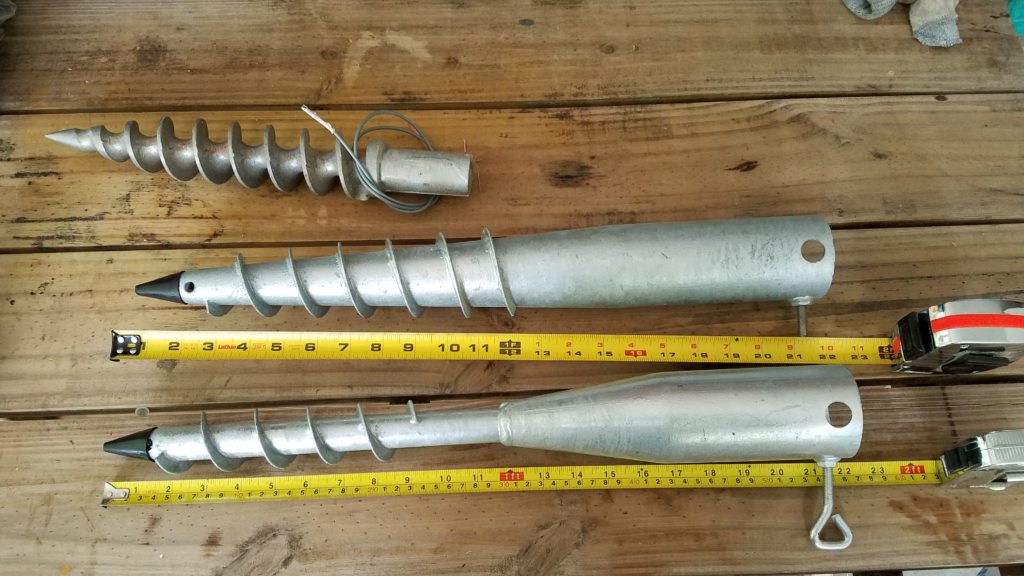
Two different types of auger bases for use with telescoping masts by W4KAZ 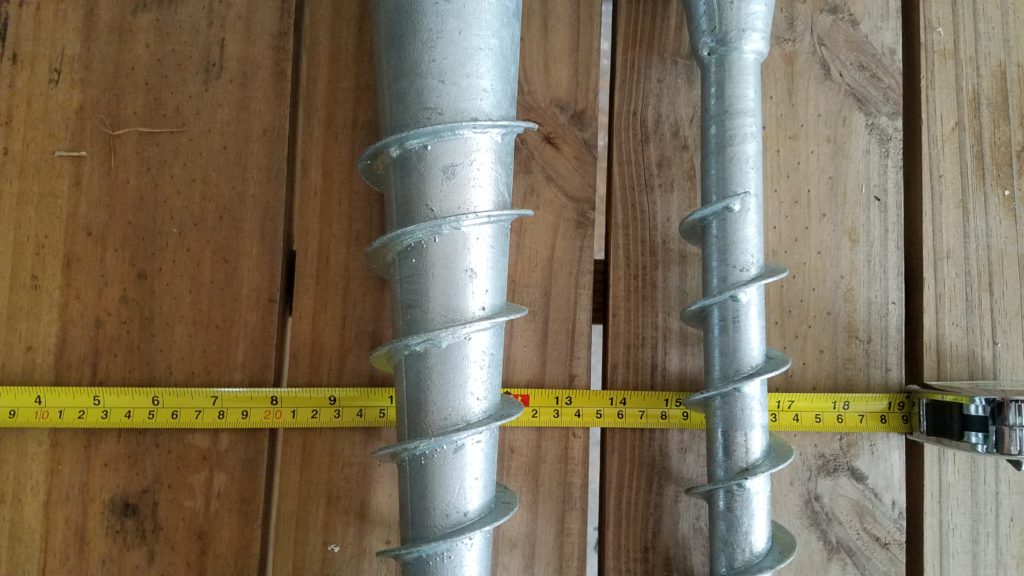
Two different types of auger bases primary difference is size. The auger on the left has threads down a tapered shaft. On the right, the auger shaft is a uniform width of tube welded onto the top section. The usable depth on the left auger is also about 2 inches more than the one of the right. 


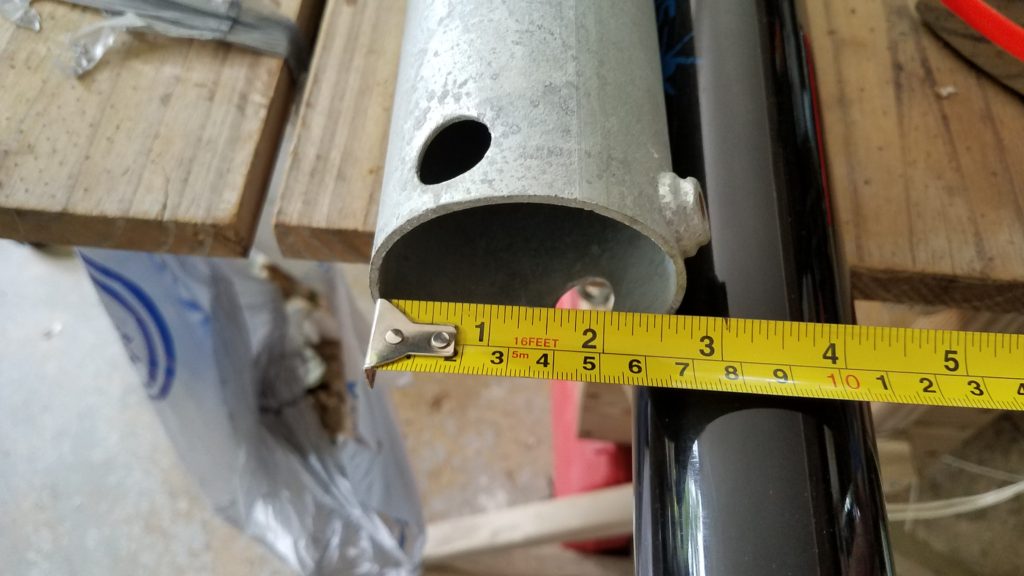

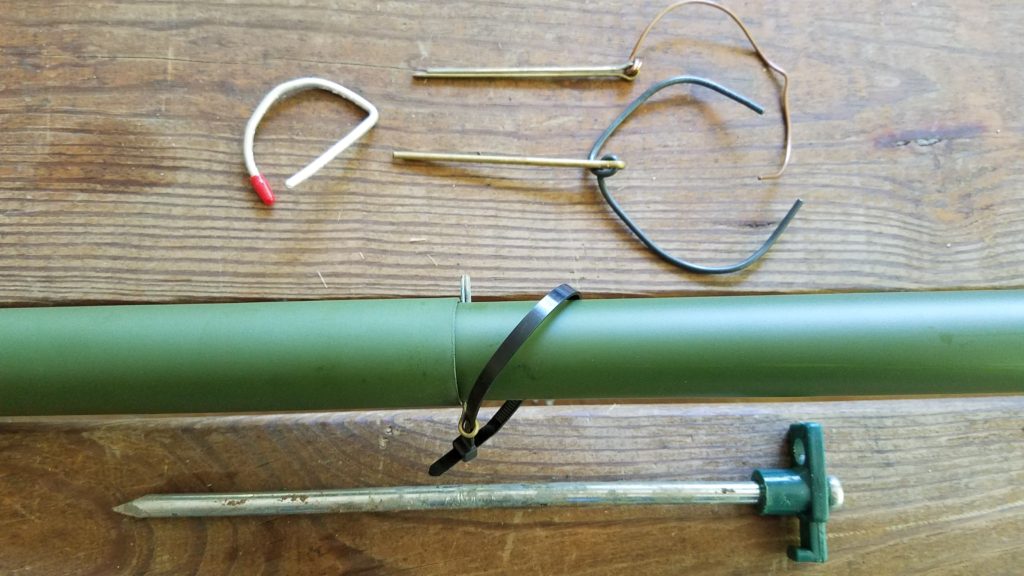
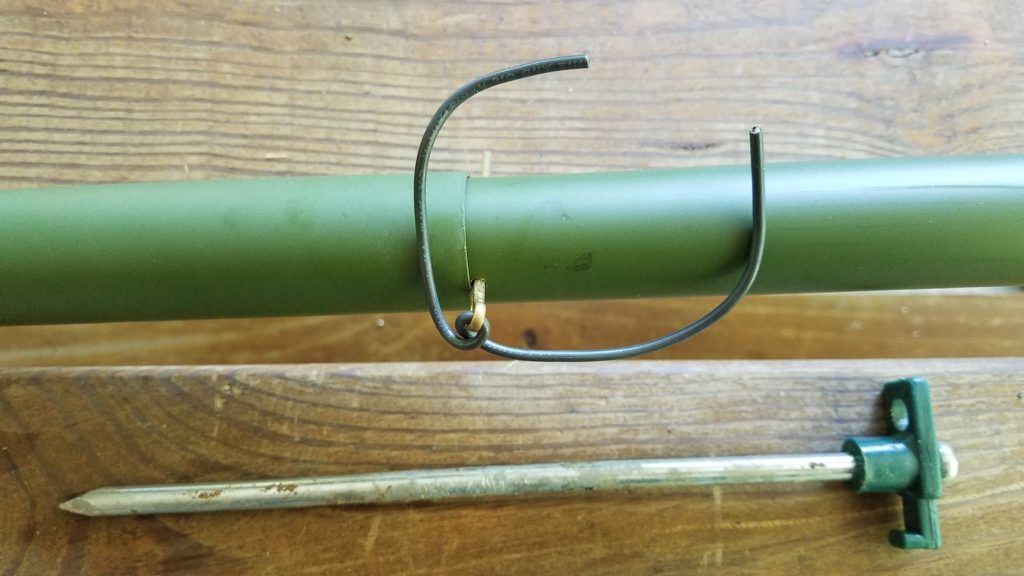
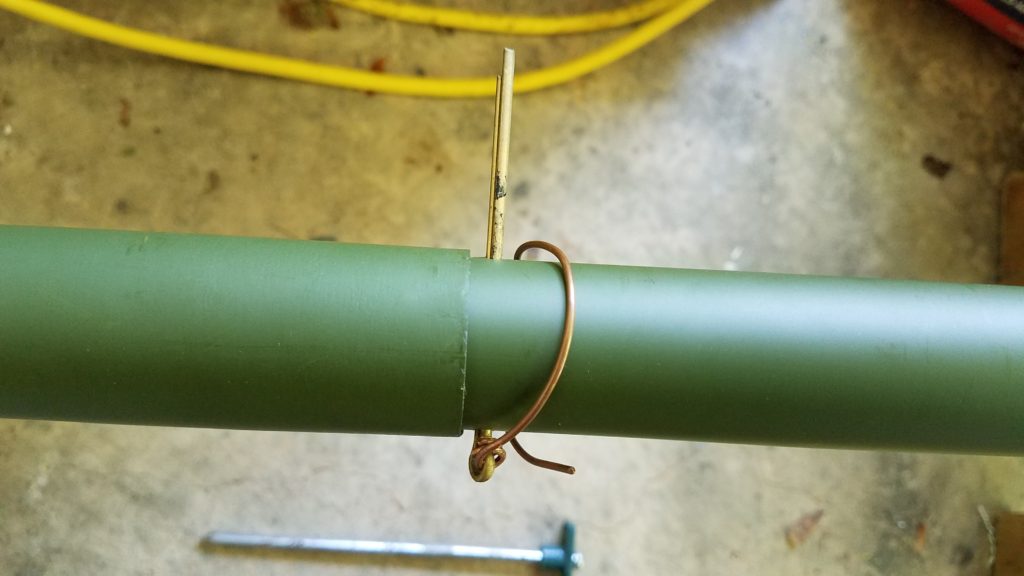
I don’t expect I have been the first to go down this less traveled path but have not seen it documented elsewhere. So some photos above for reference. I drilled 9/64 holes in the bottom of each nested section, just ABOVE the joints, and use 1/8 cotter pins.
My 10+ year old mast from K4TMC has been deployed numerous times. There is still only minor wear to the drilled holes, and zero cracking or vertical splits. YMMV. Caveat Emptor. An additional tip would be to have spare pins, and pins in at least two lengths. The bits of wire are used to keep the pins from vibrating loose in the ocean breeze. The also are used with coax to keep the feedline close to the mast. Generally I tape the feedline when using twinlead.
The choice of feedline is made on deployment depending on the distance from the antenna to the operating position. I use LMR240/RFC240 for the feedline drops when the operating position is close to the antenna, and 300 ohm ladderline from DX engineering for long runs.
2018 IOTA using single K4TMC mast
2018 IOTA K4Z time lapse mast deployment video
2015 IOTA W4O at Okracoke with N4YDU
Jackite 21 foot mast from bestnest.com
American Ground Screw Model 1 with Cap
by American Ground Screw Mfg & Supply
??more??
Leave a Reply